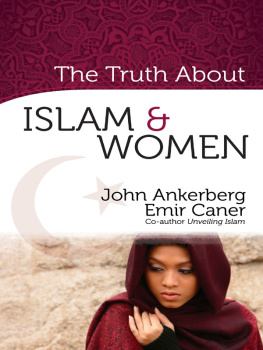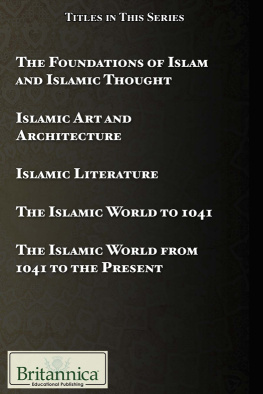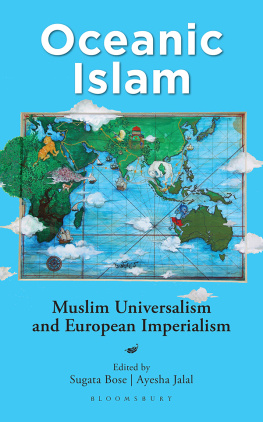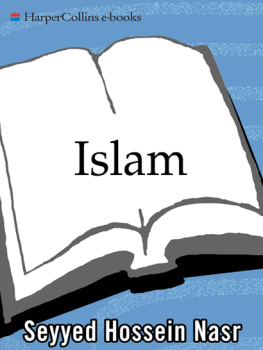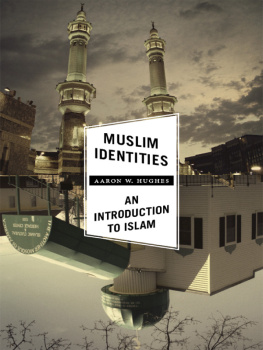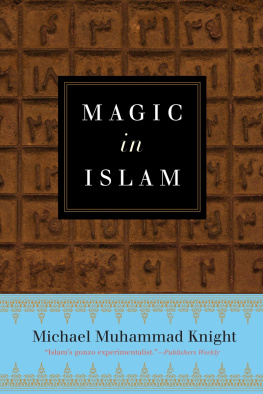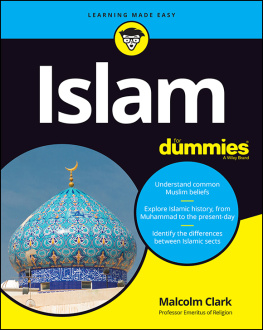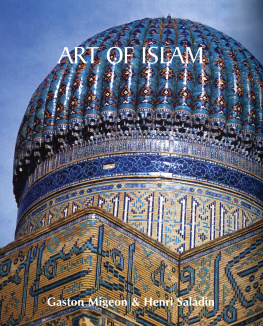Baseline Co. Ltd
All right reserved.
No parts of this publication may be reproduced or adapted without the permission of the copyright holder, throughout the world. Unless otherwise specified, copyright on the works reproduced lies with the respective photographers. Despite intensive research, it has not always been possible to establish copyright ownership. Where this is the case, we would appreciate notification.
Introduction
W ithin a century, the Arab conquests that spread rapidly into the East, North Africa and Spain upset the social fabric of all the subjugated peoples by imposing not only a new religion and organisation, but also new customs and practices. One religion alone orchestrated the spread of a single statute. Although still reeling in the aftermath of barbarian conquests and torn by sectarian conflicts among Christians, the ruined former Roman provinces became the cradle of a new world, the Muslim world, which for centuries was more civilised than most countries in Europe. Since Muhammad had promised his followers that they would possess the kingdoms of the world, the enjoyment of material things was viewed as a gift and a reward, not as a despicable pleasure to be shunned by the faithful. Consequently, Muslim leaders sought to surround themselves with luxury and decorated their cities and palaces. The ostentation of caliphs became proverbial, and throughout their empire imposing monuments sprang up whose opulence and elegance remained legendary in the East.
The Muslim civilisation, forged by the efforts of many different people, was not composed solely of Arabs. Consistent with the models that influenced it and the places where it grew, it also included Greeks, Persians, Syrians, Egyptians, Spaniards and Indians. Considering all origins together, however, Arabs, although never so far accurately defined, unquestionably made up the greatest number. This background notwithstanding, they were able to fuse these greatly diverse elements into one homogeneous blend and build a civilisation that bears the mark of their genius. The art of Felix Arabia, ancient Yemen, cannot be left out of a list of countries that influenced early Islamic art. The primary result of Islamic conquests was a kind of blend of Eastern and Western artistic traditions.
This vast Muslim world, whose pilgrimages to Mecca reflected the nomadic nature of their culture, made persistent efforts towards unification, transmission and mixing of the various traditions in their empire, resulting in a constant evolution of the arts. During periods of peace, the pilgrimage, obligatory for every faithful Muslim, brought together people from various countries. Naturally, people of the same trade preferred to meet together and interact with one another. The trip to Mecca was long and expensive for craftsmen from far-flung countries, and the poorest had to stop and work along the way in order to obtain the necessary resources. During such relatively long stays in the cities, the most assiduous could learn construction techniques and manufacturing skills. Upon returning home, they would try to imitate the new techniques they had seen.
Consequently, the rich and powerful Muslim world established a considerable trade system throughout the Mediterranean, along caravan routes, the Red Sea, and the Persian Gulf. During long periods of peace, under the great caliphs, the luxury and wealth of individuals facilitated trade. Immense bazaars were set up in every big city, and caravansaries appeared even in the middle of deserts. Islamic maritime art rivalled that of the Byzantine Empire or Italy. This situation was very advantageous to the renewal and proliferation of artistic techniques. The distinction between the splendour of the early centuries of Islam and the barbarism of the Christian world until the crusades is extraordinary.
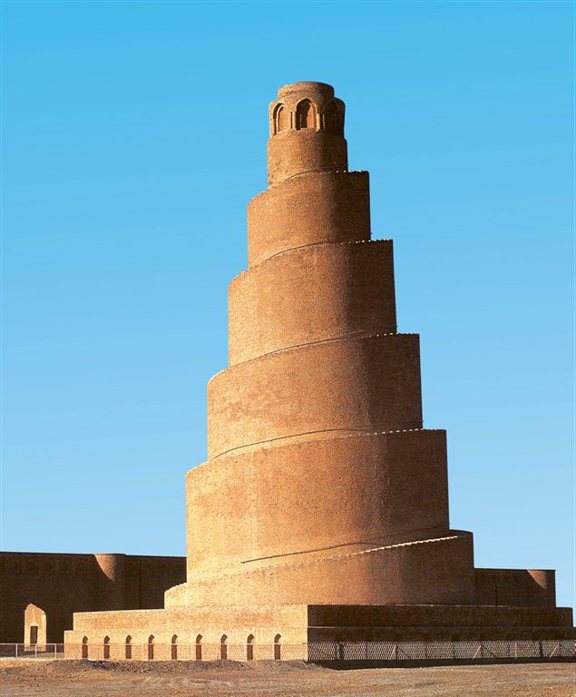
Minaret of the Great Mosque of Al-Mutawakkil , 848-852.
Height: 50 m. Samarra, Iraq.
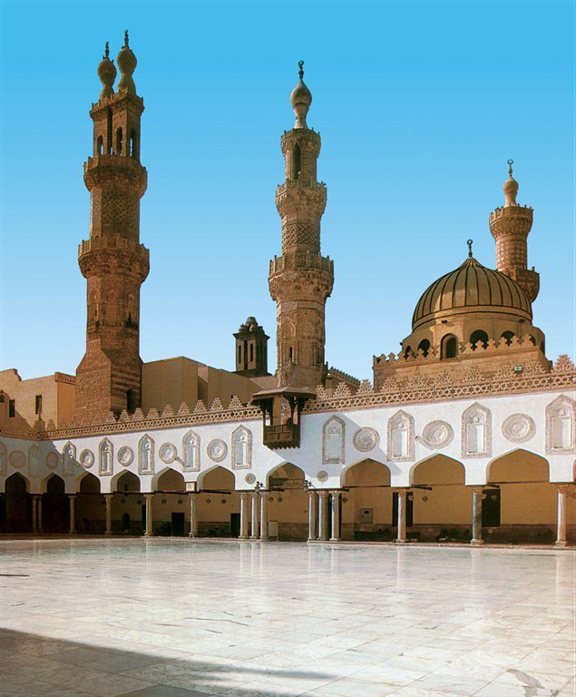
Courtyard of the Al-Azhar Mosque , 970-972. Cairo.
Architecture
A The Near and Middle East
F ollowing a rapid conquest by Amr-ibn-el-As several years after Umar seized Syria, Egypts history was thereafter closely linked to Syrias. Regular contacts between Egypt and Syria resulted in interactions between these two countries and, in most cases, the mutual development of art. In 634, Damascus fell to the Muslims; in 637, Umar entered Jerusalem, and Aleppo and Antioch followed respectively. It is most likely that the monuments of Antioch were inspired by the construction of the Qubbat al-Sakhra in Jerusalem. There was also a renowned domed church in Antioch, dedicated to the Virgin Mary: according to the ancient Muslim writer Macoudi, this church was one the wonders of the world. Nevertheless, the style of these Syro-Egyptian monuments remained similar to the method adopted by architects in the Maghreb until around the close of the 9th century.
The heart of the mosque is the mihrab, a decorative niche in the wall that indicates to worshipers the direction of Mecca, towards which they must turn during prayer; this wall, along with an open courtyard, presents the typical design of early North African mosques. The first type is the mosque with porticos. It has a square central courtyard, with an ablution fountain in the centre; the fountain is shaded by porticos, the one in the east being the furthest away, below which is located the mihrab; this portico is a shaded oratory with parallel naves; next to the mihrab is the minbar, a pulpit for sermons, podiums where readers of the Koran stand and massive pulpits on which the holy book is placed. All the mosques in Cairo followed this plan until the reign of the Ayyubids. After that period, small and even big mosques were often built on the cruciform plan of madrasas or religious seminaries, and later, the Ottoman conquest introduced the plan of great Turkish mosques with domes.
The first mosques were all constructed according to this plan. In effect, the entire length of the whole mihrab wall runs parallel, so to speak, from the point of view of the orientation of worshippers at the time of prayer, to the mihrab itself; it is, thus, the nave that spans the length of the wall that is in actuality the sanctuary. It is therefore to be expected it actually happened several times that the enlargement of mosques was carried out with relation to this direction. As a matter of fact, the ceilings or arches of these naves were supported by columns. Ancient columns, their capitals and their bases were therefore used to support these arcades.
Cairo
Rather than the lavishness of materials used, the beauty of early Egyptian mosques sprang from painting, gilding and tapestry hangings. For example, the Tulun Mosque, one of the oldest in Cairo, is made solely of plaster-coated bricks. In Syria, Damascus and Jerusalem, however, the rich decoration does not have similar characteristics: precious marbles, metals and enamel mosaics were used in construction. Marble columns, capitals and bases, marble or mosaic coverings, bronze doors, painted and gilded ceilings, beams covered in sheets of embossed and gilded bronze... all were used both as construction materials and as decoration. It was thus an application of Roman and Byzantine methods, but with an entirely new spirit in the general layout, which was distinctly defined by lavish decoration.


